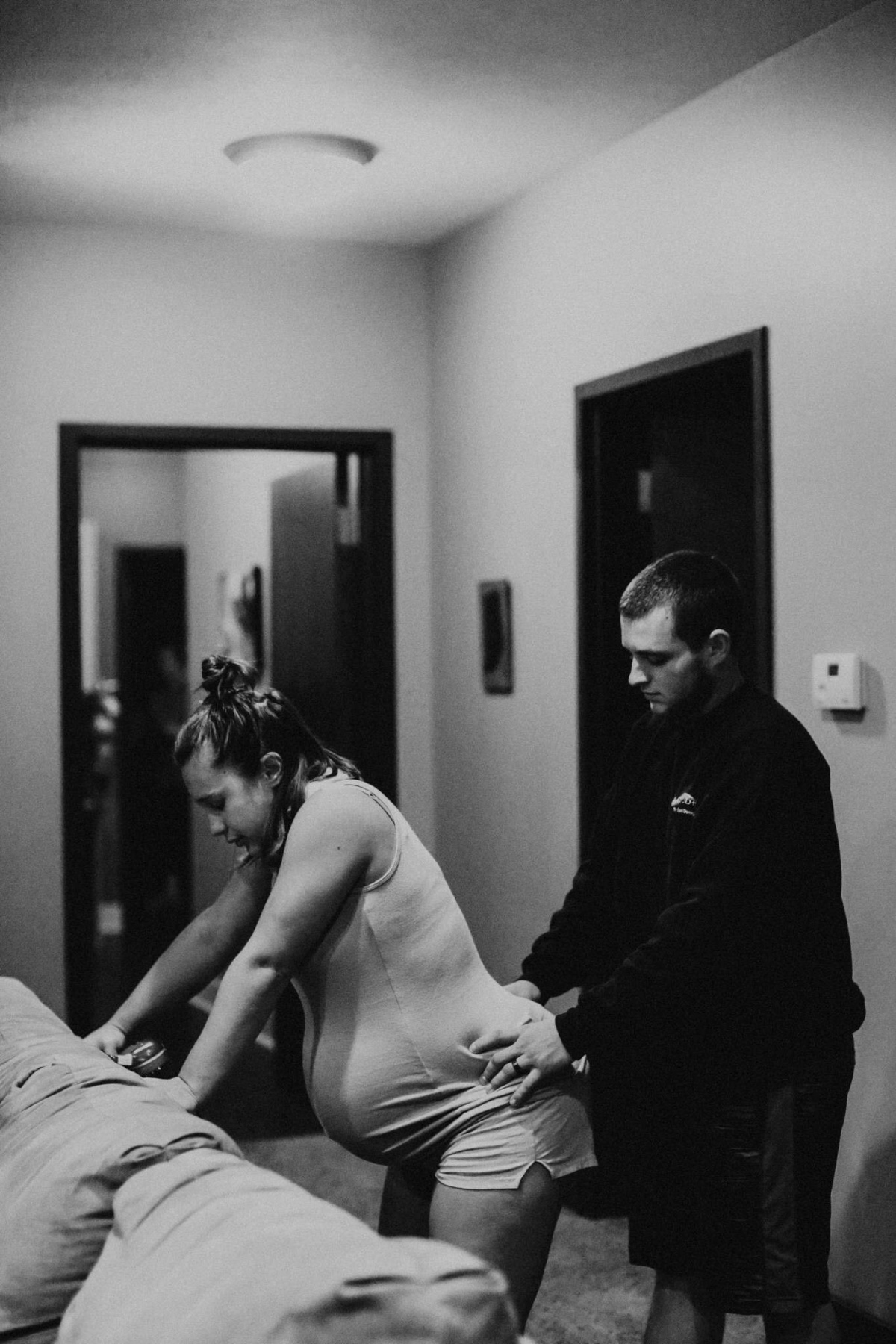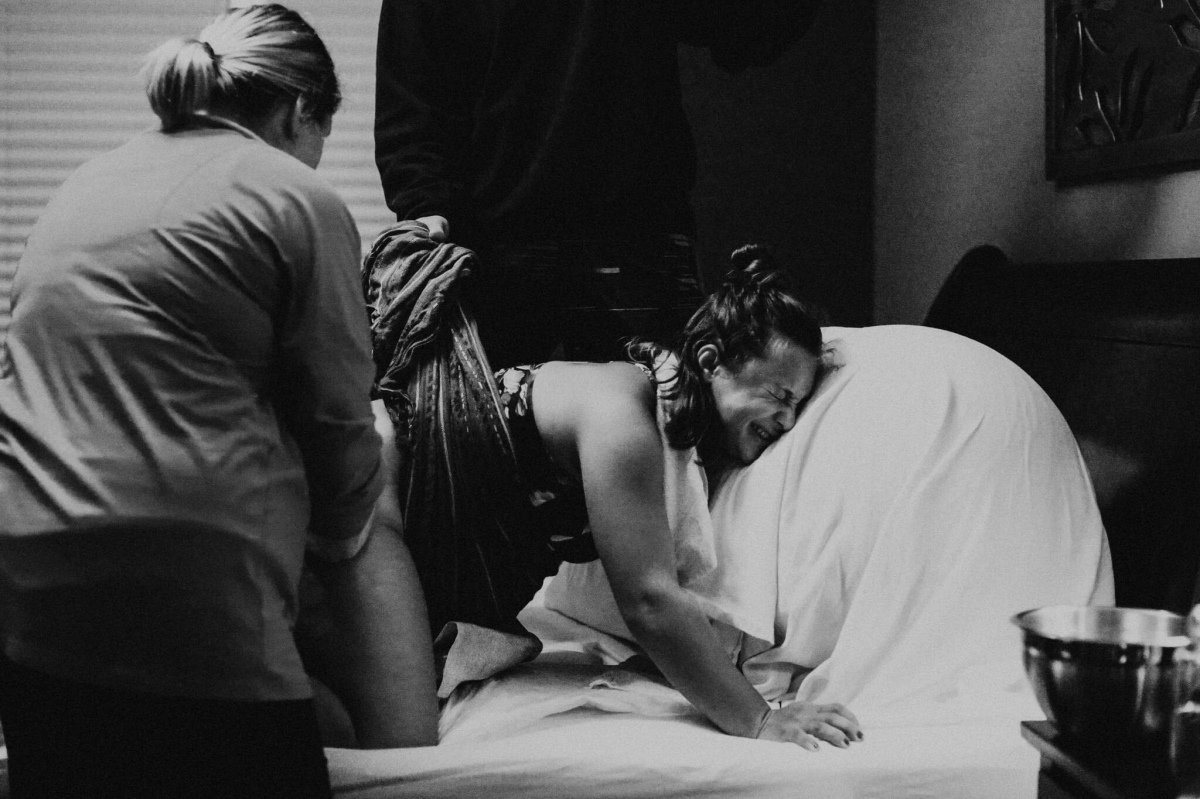In a recent survey of over 2,000 women, 70% of those who had been on hormonal birth control said they had either quit taking their medication or had thought about quitting it in the last three years. That’s an incredibly high disapproval rate if you ask me.
A week ago, I posted on social media that I was interested in hearing the reasons why women are ditching hormonal birth control (HBC) and since then, I have chatted with 42 women who have shared their stories with me. It has been such a joy to connect with them. (Side Note: Most of these women are bloggers as well. Click their names to check out their blogs!)
Almost all of these women are millennials and they attributed their decision of quitting HBC to logistical reasons, physical and mental health reasons, moral/spiritual reasons, and to the wonderful non-hormonal alternatives they have found.
Logistical Reasons
The most popular form of HBC is the Pill which is usually supposed to be taken once each day at the exact same time of day. If it is taken even a couple hours late, it is considered ineffective for the next few days. This can, of course, be a huge inconvenience for many women.
And for some women like Amanda Krieger, who admits she was “terrible at remembering” to take her pill, it can quickly mean a surprise pregnancy.
But the pill isn’t the only form of HBC that can result in an unplanned pregnancy. Joy Davis got pregnant on birth control “not just once but three times… once on the pill, second on the NUVA ring, and third on the Mirena.”
For these women, quitting HBC is simply a logistical decision in an effort to find something more effective.

Physical Health
A huge percentage of the women I talked with cited something related to physical health as their reason for quitting HBC.
Keep it Natural
We live in a culture where it’s very common for people to try to be as natural as possible. In her blog, “How I Don’t Use Hormonal Birth Control,” Ronni Peck writes, “It’s common for people to be concerned about using BFA-free products, and eating only organic, pesticide-free and hormone-free food, yet they completely gloss over the realization that they are likely consuming higher levels of hormones through birth control than they are avoiding by avoiding those products. If you’re legitimately concerned about hormones in your food, it’s probably also worth being concerned about the hormones in your birth control.”
Eliza Donovan echoed this idea saying, “tampering with hormones is dangerous. It’s one thing to have to take them when prescribed for medical reasons and another to consciously meddle with one’s hormone levels without a medical reason.”
Furthermore, Angel Coleman mentioned that taking artificial hormones felt too risky for her “natural body’s rhythm.”
For these women, keeping nature how it was created to be is a high enough priority to ditch HBC all together.
Weight Gain
Atleast seven of the women I spoke with mentioned weight gain as a side effect of birth control that they no longer wanted to deal with. Urwah Ammar told me that she gained weight quickly after starting birth control pills and she “didn’t feel comfortable in [her] body anymore which led to not wanting to be physical with [her] husband because [she] was so insecure.” She quit HBC, got a non-hormonal IUD and was able to lose the weight and regain intimacy with her husband.
Low Sex Drive
In addition to weight gain taking its toll on sexuality, the hormones in birth control often diminish a women’s sex drive completely which is an ironic side effect considering most women are on HBC to enjoy sexual freedom. But for some women, ditching birth control has been a great decision for their relationship as is the case with Aimee Mielke who told me that she “actually had a sex drive for the first time” after quitting HBC which was “much better for [her] marriage than never being in the mood like [she] was before.”
Risk of Breast Cancer
Though the risk of developing breast cancer due to HBC is low, it is still a high enough risk for five different women to mention it as a reason for ditching birth control. Kalynn Joyce‘s mom had breast cancer so Kalynn simply said she “is not willing to chance it.”
Impact on Fertility
Because HBC works by changing the body’s reproductive hormones, it is not uncommon for things to take awhile to regulate after stopping the pill. This means that it may take a bit longer to get pregnant than desired after being on HBC. Paige Martinek “dealt with infertility for three years before having [her] son via IVF” but then she was able to naturally conceive her daughter soon after her son’s birth. She told me that she was afraid HBC would make it hard to get pregnant again so she’s “chosen to stay off of it.”
Miscellaneous Side Effects
Migraines were mentioned a couple of times as an unwanted side effect to HBC.
Taylor Foley experienced “stomach issues, cramping, mood swings [and] increased heart rate.” These started out mild but got worse overtime until her “heart palpitations increased, [her] stomach issues were unbearable, and [she] ultimately reached a point where [she] could barely stand up.”
Jenn Schultz tried the NUVA Ring but experienced “lower back pain so intense it kept [her] up at night.” She also had heart palpitations, chest tightness, and shortness of breath so badly that she went to the ER. She stopped using the Ring after that.
HBC Was Not a Good Fix
Many women are prescribed birth control medication to fix a different hormonal issue they are experiencing, regardless if they are sexually active or not. This may be for acne, PCOS, or irregular cycles, for example. But for some women, like Jamilyn Lambert, using HBC in a situation like this is “just a bandaid for a more permanent issue.” She had much better luck going to a homeopathic doctor “who found the root of [her] hormonal imbalance.”
As with any healthcare decision, it’s so important that women consider all benefits, risks, and alternatives to any plan, procedure or medication they are taking.

Mental Health Reasons
Just as common as issues regarding physical health, HBC seems to take a huge toll on mental health.
Sara Lynn told me that when she was on HBC, it made her “feel like a different person” which is a phrase I hear all the time regarding HBC.
On the other hand, Renita Lewis said quitting the Pill was what finally helped her get “back to [her] cheerful self.”
Depression
Depression was mentioned several times when I talked with these women which unfortunately is not a surprise. In a study of over one million Danish women, researchers found that women who start birth control (estrogen and progesterone combined) were 23% more likely to be prescribed antidepressants for the first time. Women who started the mini pill (progesterone only) were 34% more likely to be prescribed antidepressants for the first time. Women who were on the Patch were TWICE as likely to develop depression and those using the Ring were 60% more likely to develop depression. These risks are even higher for teens and young women.
Fortunately, many women are realizing that depression is not something they just have to accept as a side effect of their birth control and they are choosing to quit HBC instead. Rebecca Crosby told me, “Once I stopped taking birth control, I was able to stop taking the antidepressants within 6 months.” She said she’s “been off them for 6 months now and feels amazing.”
Anxiety
Anxiety was also cited several times as an unwanted side effect and a great reason to quit HBC. Alexis felt a huge difference in her mental health after she stopped taking birth control medication saying, “I was on it for 6 years straight and I felt like my emotions were wacky and I didn’t even know who I was anymore. I have been off any birth control for 6 months! Best thing I ever did. I’m more relaxed, less anxiety… I tell all my friends to just ditch it. [It’s] not worth the pain and suffering.”
Miscellaneous Moods
In talking with these 42 women I heard lots of different words describing how HBC made them feel including angry, unstable, grouchy, irrational and aggressive. Many of them talked about intense mood swings as well.
India Longo said, “when I was on the shot I swear I felt so crazy. I couldn’t take feeling that way anymore.”
Similarly, Jenny Welsh told me that she struggled with feeling paranoid while on HBC and “had a hard time trusting [her] own instinct and reading people.”
For these women, quitting hormonal birth control was worth it to feel more stable and even keeled.
Suicidal Thoughts/Actions
For a couple women, HBC affected their mental health so seriously that they became suicidal. Crystal told me that she was put on birth control for PCOS as a high school freshmen but when she was on a family vacation she realized she “had to get the Nexplanon (arm implant) removed or [she] was going to kill [herself].”
She continued saying, “hormonal birth control is NOT my friend. I have tried so many different kinds of pills, implants, shots. It ends the same way every time. Mental breakdown, self-mutilation, to suicidal thoughts.”
She then said, “Now I don’t use any kind of birth control… My mental health is more important than birth control.” Many of the woman I have connected with this week would say the same thing.

Moral/Spiritual Reasons
About five women I talked with mentioned moral and/or spiritual reasons to ditch HBC.
Krissy shared with me that her decision was due to the fact that all forms of HBC have “a secondary effect of diminishing the uterine lining to prevent a fertilized egg from attaching.” She continued saying, “I didn’t want to take that risk since I believe life begins at conception.” Two other women told me the same thing.
One verse that is often quoted in regards to family planning comes from Psalm 127:3-5 which says “Children are a heritage from the Lord, offspring a reward from Him. Like arrows in the hands of a warrior are children born in one’s youth. Blessed is the man whose quiver is full of them.”
For Carissa, this means that “children are always, always a blessing and that to limit the amount of children that the Lord chooses to give us or the timing of when He chooses to give them to us is playing the role of God and refusing blessings that He desires for us.” Because of that, she has chosen to quit using HBC.
Naomi is another friend of mine that has been convicted to ditch birth control. She shared several verses with me including Romans 12:1 which says “And so, dear brothers and sisters, I plead with you to give your bodies to God because of all he has done for you. Let them be a living and holy sacrifice — the kind he will find acceptable. This is truly the way to worship him.”
For this reason and so many more, she feels compelled to live completely surrendered to God. She explained “I said God could have control of my life, yet I was taking a pill to control life.” She no longer uses birth control and is placing her trust in God to do their family planning.

Non-Hormonal Alternatives
Many of the women who ditched HBC mentioned being satisfied with their non-hormonal options. For many of them, this meant condoms or the copper IUD.
Fertility Awareness/Natural Family Planning
At least ten of the women I spoke with said they now practice the Fertility Awareness Method or Natural Family Planning as their form of birth control. Contrary to common belief, these methods are NOT the same as the Rhythm Method which goes by the calendar. Instead, these women have learned to become very in tune with their own individual cycle. They use Fertility signs such as basal body temperature, cervical fluid and cervical position to be able to accurately identify when they are in the fertile phase of their cycle, which for most women lasts somewhere around 5 days. Once they are comfortable understanding their own unique cycle, they are able to have unprotected intercourse when they are safely outside of the fertile window. Inside their fertile window they either abstain from intercourse or use a barrier method such as a condom. If they correctly abstain, these methods are arguably as accurate as HBC. If they use a barrier method, FAM/NFP is as accurate as the barrier method chosen.
In her blog, “Why I Stopped Using Birth Control“, Kermilia White says, “I know it seems like a lot but after about two months or so, I was pretty comfortable tracking and became well acquainted with what I should look for month-to-month. So far, natural family planning has been working for us for a year and counting.”
Some criticize NFP/FAM because they say it will not work for women with irregular cycles. However, because these methods rely on fertile signs and not on the calendar, they are actually completely doable even if cycles are crazy. I would argue that practicing FAM is even more important for women with irregular cycles so that they can more accurately decide what is happening each day.
Ayesha Schroeder has tried “the pill, the Ring and a copper IUD” but “all had horrible side effects.” She switched to Natural Family Planning and “LOVES” it. She told me, “Even with my irregular cycles I can tell when I am fertile and am much more in tune with what is happening with my body.”
Britta Roberts uses NFP and says she has been able to plan her pregnancies as she wants them. She told me, “Even through cancer, a major surgery, and tons of health problems, we have managed to use NFP to prevent pregnancy.”
And finally, many couples are wary of using Fertility Awareness Methods because they do not want to have to abstain from intercourse during their fertile window. However, it’s important to remember that just because unprotected intercourse is not an option during those days, intimacy is still allowed. In fact, rather than burdening the relationship, NFP may actually help it. Jennifer Widera said, “interestingly, learning to find other ways, when intercourse wasn’t an option, really sparked our sex life.”
These women have found satisfying alternatives to hormonal birth control which is partly why they ditched HBC all together.
[Side note: If you are local to North Central Indiana and are interested in learning the Fertility Awareness Method learn more about my class here. If you aren’t local, I hope to reach you soon. Let me know you’re interested in the comments below.]
So if you’re on hormonal birth control and dissatisfied with it either logistically, physically, mentally, or spiritually, I hope this post shows you that you’re not alone. I also hope it gives you the knowledge that there are other options out there, it’s not worth it to keep taking a medication you hate, and your whole health is important. I would love to hear your story regarding HBC. Leave it in the comments below!
















































































